While I can see how some folks think this is the worst of the Final Fantasy games, I really liked it… mostly.
A Little Bit about the Plot
The game opens in the world of Cocoon, a hollow, artificial world with millions of people living in a high-tech society. Cocoon hovers above the natural world of Gran Pulse, a world of which the normal citizen of Cocoon knows only as an evil place where monsters roam.
The world of Cocoon is maintained by demigod-like beings called fal’Cie, who each are coerced into performing some function necessary to the maintenance of Cocoon and its people — food, energy, transportation, the power to levitate Cocoon, and even its civil governance are all the responsibilities of various fal’Cie.
When a fal’Cie needs something to happen that is outside their sphere of control, it can turn a nearby human into a l’Cie and give them a Focus. l’Cie have the ability to use magic and summon Eidolons. Their focus is the task their fal’Cie needs them to complete within a certain amount of time, the time elapsed shown as changes to a brand every l’Cie bears. If the brand completes before they have finished their focus, they are turned into monsters called cie’th that attack anything it encounters. If they succeed in their focus, they are turned into impervious crystal.
At the start of the game, a fal’Cie from Gran Pulse accidentally brought to Cocoon awakens and transforms several people into l’Cie with a focus that they don’t immediately understand, but appears to be to use their new powers to destroy Cocoon.
It’s a lot of plot
Because the plot is so intricate (and this is only the setup you play through at the start) — because there is so much to take in, the first several hours of the game are on rails as you learn about the world, the people who were transformed into l’Cie against their will and set on a quest that goes against every fiber of their being, and the truth behind their entire way of life.
This isn’t hugely different from earlier games. Very few FF games let you roam the world freely during the initial few hours, and FFXIII follows them in eventually opening up the world and letting you make your own way and follow your own adventures.
It’s a unique battle system
There are six playable characters:
- Lightning — Commando, Ravager, Medic
- Fang — Commando, Sentinel, Saboteur
- Hope — Ravager, Medic, Synergist
- Sazh — Commando, Ravager, Synergist
- Vanille — Medic, Saboteur, Ravager
- Snow — Sentinel, Ravager, Commando
And six roles:
- Commando — physical attacker
- Ravager — magical attacker
- Sentinel — tank, does not attack
- Medic — pure healer
- Saboteur — debuffs enemies
- Synergist — buffs allies
Each character can initially take on one of three roles, that they can change on the fly during battle using the Paradigm system. Each combination of two or three roles is its own Paradigm; for example, you might want three commandos to go against a magic-resisting enemy, or a sentinel, medic and ravager to handle tanking and healing while the ravager chips the enemy down.
With both two role and three role paradigms available, there are 252 possible named paradigms, of which you can have six active at any time.
In battles, you only directly control the party leader, with the other two acting according to the role automatically. You can set up your attacks manually, but most of the time you will be just watching the battle progress and swapping paradigms in response to what’s needed — if the boss is readying a big attack, maybe two medics and a tank? Or when you need to burn something down, three commandos. Choosing and swapping paradigms is how you battle in FFXIII. And, if you chose wrong, losing a fight gives you the option to immediately return to just before the fight started, all consumables restored, giving you the chance to try different strategies as you like. And unlike many FF games, all health is restored and all status conditions are healed once the battle ends.
This is just the barest summary of the battle system. Preemptive Strikes, Paradigm Shifts, three-way battles, the whole chain bonus system, how and when to stagger… there is so much to go over that even after the end of the main quest, the game has still not gone over all the battle systems. (Stagger locking, for example).
This is probably FFXIII’s biggest issue. There is so much to learn in the game that the first twenty or so hours feels like a tutorial system, and even then, the game hasn’t done more than touch upon what in other games would be main focuses, such as why and how to upgrade gear. (Unlike other FF games, new weapons aren’t inherently better than old weapons, and weapons can be transformed into different weapons. The game never bothered telling me that. I hit upon how to transform weapons by accident when I was just fooling around).
The common RPG strategy of “make enemy HP go down to zero” just seems so quaint compared to FFXIII’s intricate battle system. In FFXIII, it is: build attack chain to stagger point, using Commando to slow the rate of chain decay and Ravager to build it quickly, stagger the enemy, use Commando to juggle enemy while decreasing HP with typically two Ravagers, unless the enemy has a high stagger point, in which case switch to two/three Commandos to punish the mob during stagger, then when stagger is about to end, switch to a defensive paradigm to reapply buffs and debuffs and heal.
Is what would be a simple fight in FFXIII.
The Datalog
FFXIII takes place over thirteen chapters over thirteen days, although it is not one day per chapter. The game fills in the timeline with flashbacks where necessary that fill out the backstories of the PCs and explain how they all came to be in the same place at the same time. As each new bit of information comes to light, the timeline changes and the various character bios update to match. The backstory of one character in particular changes dramatically when it becomes clear that some of what they have been telling about themselves was a lie.
Since FFXIII is very much a “show, not tell” game, in order to find out the full story of what’s going on, it’s necessary to go to the Datalog fairly often to find out more information about the people, fal’Cie and monsters you encounter, and to watch the full story of the thirteen days come together.
The characters will pretty much expect you to have kept up to date with the Datalog, as they will refer to events you could only have found out about there.
So, tell me the good bits about the game
I’ll get to the points about the game I didn’t like so much, but that’s usually where reviews of FFXIII begin and end, so let’s talk about the good things.
The story is likely the most intricate of any Final Fantasy game I can think of. Characters are outright deceptive. They betray each other. Some learned the wrong lesson from something that happened to them. Each character has their own motivations that don’t always mesh well with those of other characters. It’s complicated!
Looking at the FF games that bookend XIII, 12’s characters knew who they were at the start of the game and didn’t change that much by the end. 15’s characters certainly had growth over the game, but their characters might have just come into existence pushing that car for all the influence their backstory had on the game — and they had an anime and two prelude computer games (the demo and the 2D scroller) to explain it.
The characters in XIII start as ciphers and stereotypes, then show, as the game progresses, how every one of your initial impressions about them were wrong. Except Snow. His hero complex is one of the most consistent things about the game.
Once the battle system is understood, I feel it is one of the best battle systems in any Final Fantasy game, the obvious next step of the Active Battle Time system used in many previous games. Battles are exciting and strategic. Most battles require you to always be thinking a step ahead so that you can have the paradigms you need ready to go when you need them.
The graphics are amazing. I played the game on an unmodified PlayStation 3 and I was just blown away by both the cinematics and the live game world. Monsters are imposing and detailed. The bosses are impressive. The fal’Cie we encounter are all extremely creepy. I don’t know how a remake could make the graphics any better.
The music is as great as you’d expect in a Final Fantasy game. Each area has its own theme, and the battle music is exciting.
And the bad stuff?
For all that the first half of the game is an extended tutorial, it still doesn’t manage to explain everything. How can I tell if a new weapon is better than a previous weapon? No clues given. How do I upgrade my gear? Although it points the player to the place where it can be done, it doesn’t explain how it works. What are all these random drops for? Should I sell them? No, they are for upgrades. What are all these expensive gems and metals that I can’t use for upgrades? Game doesn’t tell you. I found out by accident.
Which paradigms should I choose? Game goes over a couple standard ones at the beginning, but then you are left to experiment. It does explain the stagger mechanic, but as that expands through the game, the game doesn’t explain what the changes mean (for instance: a mob that cannot be staggered). When, toward the end of the game, weapons drop that make staggering a mob impossible, it doesn’t explain why you would want to turn off a mechanic that the game had emphasized was key to every battle for the hardest fights in the game.
But I’ll tell you: If a monster has a very high stagger point, Stagger Lock means the chain gauge doesn’t drop when you’ve switched to healing or buffing or a tank mode. Since the chain bonus is a damage multiplier, it’s useful to get the chain bonus to 999% for the battle instead of hitting the stagger point and having only a few seconds of max damage before starting over.
There, I just explained it. Game never does.
When the game drops to Gran Pulse, you’re suddenly off the rails and into an open world game. However, many of the encounters you will have there will kill you instantly. The Gran Pulse content is mostly for the aftergame, once you have defeated the game’s final boss and you can access your ultimate abilities. Yes, you do not get your ultimate abilities until the game ends.
I haven’t talked about the Crystarium. This is FFXIII’s mechanism for learning new skills. Crystarium Points (CP) are earned by defeating monsters, and are spent to learn new skills. But where, for example, you could form your own, unique class in FFXII by playing with the license board, the Crystarium is pretty linear. You will fill up the three main roles for the character, and you will reach a stopping point until the game decides you are far enough on the plot to learn the next level of skills.
Even once the game opens up every role to every character, there is not much reason at all to branch out, as the three secondary roles for the character only contain basic abilities that are nonetheless very expensive.
Gotta mention it again — the Crystarium doesn’t fully open up until the game ends.
A word about the strategy guide
I found the official hardcover strategy guide in a retro game store, and thought that by using the guide, I’d be able to get past the roadblock I’d hit in the game back in 2009.
I was wrong. The official strategy guide offers boss fight guides that are slow and cautious, but FFXIII is not a game that rewards caution. The battle screens have a literal five star score based on how fast you completed the encounter. It’s balls to the wall from start to end.
The video I embedded above is the final fight in the main quest. The boss puts a doom timer on the party leader setting a hard cap to the amount of time spent to kill it. Using the paradigms and strategy in the strategy guide, I lost because of being too slow three times. Every time I needed a strategy and I went from the guide, the fight went slowly.
I looked up some hints on the web, used the paradigms and strat they mentioned, and blazed through the fight, full throttle, in a minute and a half. Roll credits.
The strategy guide has a lot of information about selecting gear and upgrading weapons, what drops what and the sort of things you might miss along the way. It even pointed out when we came across good grinding areas for CP, and I appreciated that, and spent many a happy hour filling out the Crystarium while watching a movie.
I don’t have a problem with grinding as long as it isn’t required.
TL;DR
I liked Final Fantasy XIII. I thought the story was amazing, and appreciated the subtle call backs to previous Final Fantasy games, especially Final Fantasy IV (and of course, Final Fantasy XII). Graphics and music was incredible. The battle system is innovative and deep and grows naturally out of its predecessor, FFXII, replacing the gambit system with paradigms but using them to the same effect. The boss fights are impressive. There is no penalty for losing a fight; you can always just try it again from the start.
That said, the plot is intricate and confusing, and the game has to put a lot of effort into reminding you of who all these people are and how their stories connected so that you would understand the character’s emotional journeys. If the characters were all honest with each other from the start, a lot of the drama could be avoided since by the end, all secrets are revealed anyway.
Probably the largest sin is that you don’t get to ride a chocobo until the postgame content, and the only place I can remember seeing a moogle was in a park? (Update: Just watched a video and they showed you CAN get a Choco in Gran Pulse. Thanks strategy guide). Now I can’t remember if I even saw one there, even. It’s been a minute.
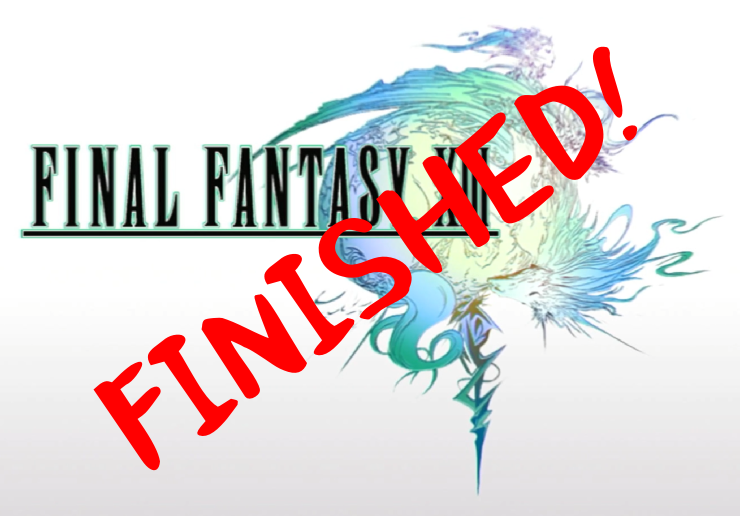

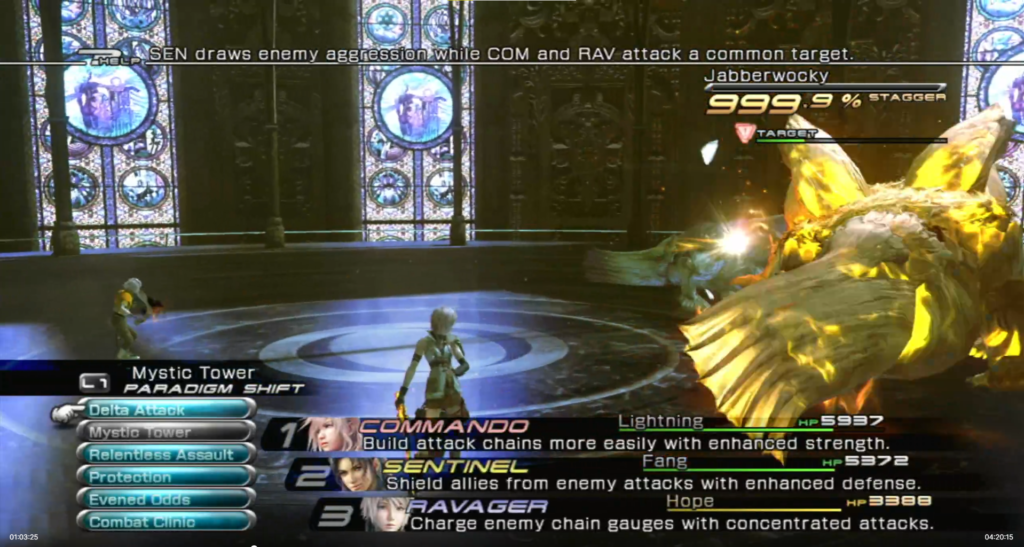


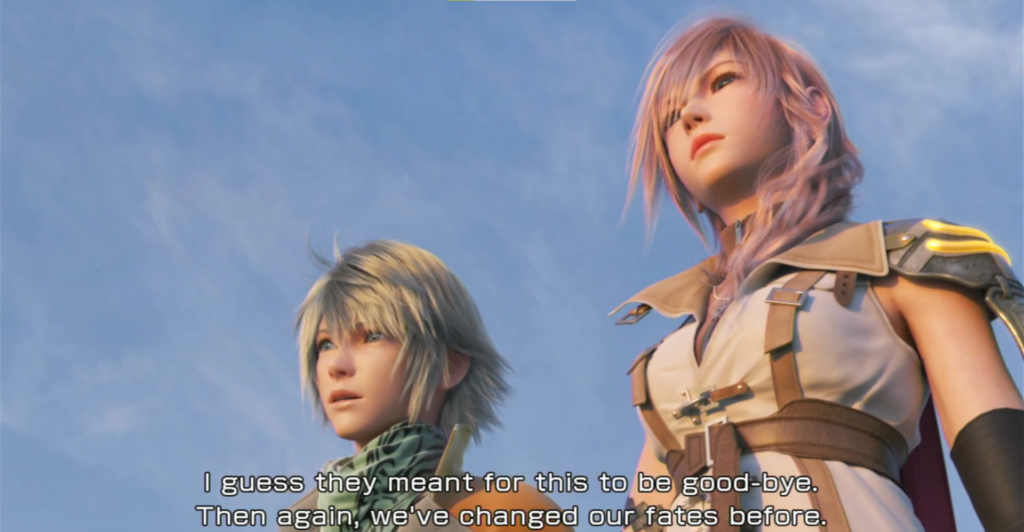

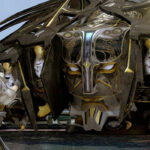
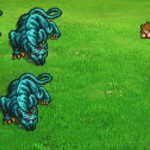

That honestly makes the game sound better than anything else I have read about it. I probably need to give it another chance. I never made it far enough to see any of the good stuff you are talking about, save that it’s absolutely gorgeous. To where I played (?six hours?) it was quite linear and pretty confusing.
It is linear, but that was an intentional choice in order to tell the story.
The game is better than I thought it was back when I first tried it in 2009. I don’t know if this is my favorite FF game — still Final Fantasy Tactics — but it is head and shoulders above FF XV.
Congrats! My son deleted my save files when I was nearing the end of the game, and I haven’t wanted to put in the time to get that deep in the game again. 🙂
oh no 🙁